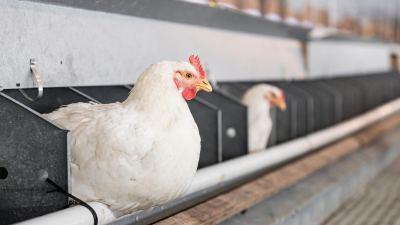Blackhead disease in chickens and turkeys

Dr. Dennis Wages of North Carolina State University explains the key strategies producers need in order to address blackhead disease in poultry.
Blackhead disease, also known as histomoniasis, took the spotlight in 2016 when the approval of Histostat was removed by the FDA. Histostat was very effective at controlling the disease in chickens and turkeys, and after its removal, the industry has experienced a significant increase in cases of blackhead disease.
What is blackhead disease (histomoniasis)?
How does histomoniasis get in the broiler or turkey house? How can it be controlled moving forward? These are some of the questions that Dr. Dennis Wages, professor of poultry health management at the College of Veterinary Medicine at North Carolina State University, explored in the webinar “Blackhead control: past and present.”
“Diseases that have historical significance tend to reemerge,” said Wages when opening the webinar. “The main reason we are talking about it (blackhead disease) today is because the preventative and therapeutic agents that were used to control blackhead have been removed.”
In the webinar, Wages covered:
- How the disease is transmitted in chickens and turkeys.
- The intermediate hosts and mechanical vectors.
- The key points of control.
- Nutritional strategies and feed additives to control the disease.
Wages concluded by emphasizing that there is a wide range of factors that need to be addressed in order to help minimize the exposure to histomoniasis. Only by having a management plan that touches all those factors will producers be able to control this disease.
To learn more, click the link below and view the webinar.
















